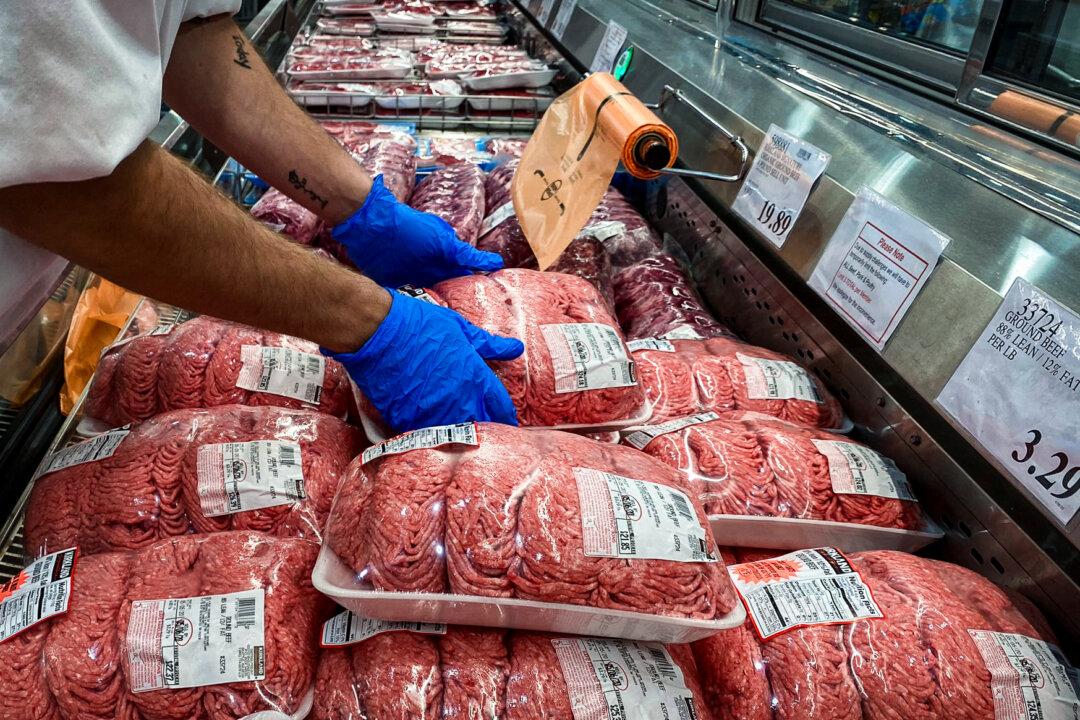Federal food safety inspectors have begun testing ground beef from grocery stores for the presence of bird flu in states where dairy cows have tested positive for the virus, according to the U.S. Department of Agriculture (USDA).
A USDA spokesperson told The Epoch Times in an emailed statement that the agency’s Food Safety and Inspection Service (FSIS) is carrying out three separate beef safety studies, including one that involves sampling ground beef from grocery stores in the nine states where dairy cattle have tested positive for the H5N1 bird flu.





